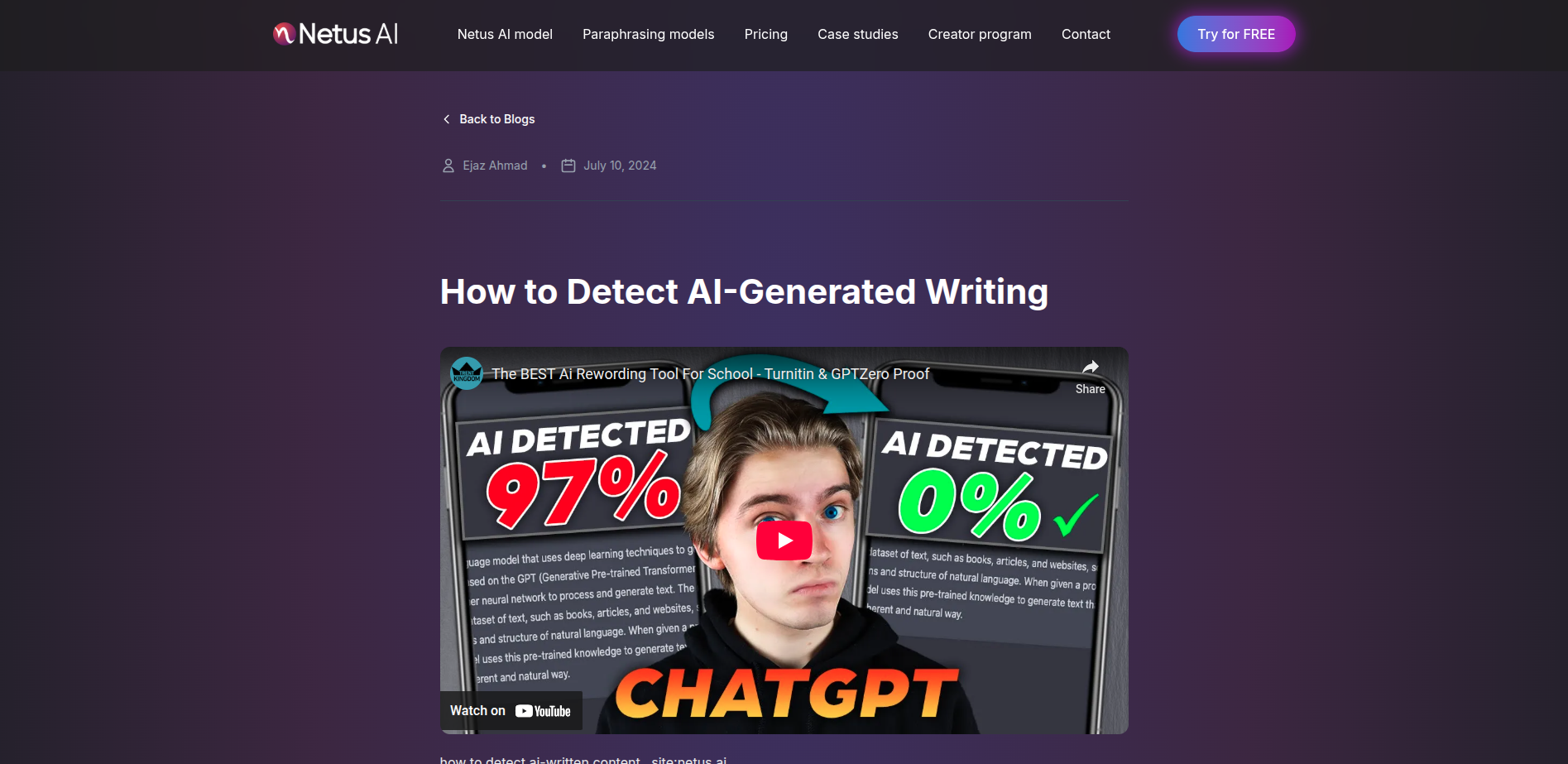How to Detect AI-Generated Writing
how to detect ai-written content , site:netus.ai
Ashley Merit
Content writer and editor for Netus.AI
Table of Contents
How to Detect AI-Generated Writing. Detecting whether a piece of writing has been generated by an AI system or written by a human can be a challenging task, and can leave you wonding does grammarly affect turnitin. With the rise of AI-generated content, it is becoming increasingly important to be able to distinguish between human and machine-generated writing. AI-generated content is becoming more sophisticated and can mimic human writing styles, making it difficult to tell the difference.
One way to detect whether a write-up was AI-generated is to look for patterns in the language and sentence structure. AI-generated content tends to be more formulaic and repetitive, lacking the nuances and variations that are present in human writing. Another way to detect AI-generated writing is to look for errors or inconsistencies in the content. While AI systems can produce high-quality writing, they can also produce mistakes that are not typical of human writing.
There are also tools available that can help detect AI-generated content. These tools use algorithms to analyze the language and structure of a piece of writing to determine whether it was generated by a machine or written by a human. While these tools are not foolproof, they can be helpful in identifying AI-generated content. As AI-generated content becomes more prevalent, it is important to be able to distinguish between human and machine-generated writing to ensure that the content we consume is trustworthy and reliable.
Understanding AI-Generated Text
Artificial Intelligence (AI) is becoming increasingly sophisticated in generating text that can mimic human writing. As a result, it is becoming more challenging to distinguish between human-written and AI-generated content. This section explores the characteristics of AI-generated text and compares it to human-written content.
Characteristics of AI-Generated Content
AI-generated text is created using Large Language Models (LLMs) that are trained on vast amounts of data. These models use Natural Language Processing (NLP) to identify patterns in the data and generate new text that resembles human writing. Some characteristics of AI-generated content include:
- Repetitive Phrases: AI-generated text tends to repeat phrases and sentences, making it sound robotic and lacking in creativity.
- Incoherent Sentences: AI-generated text can sometimes produce incoherent sentences that lack context and meaning.
- Lack of Emotion: AI-generated text lacks the emotional depth that is often present in human-written content.
- Consistency: AI-generated text is consistent in tone and style, unlike human-written content that can vary depending on the writer’s mood and perspective.
Comparing Human-Written and AI-Generated Text
Human-written content is created by individuals who have unique writing styles, perspectives, and experiences. This makes it challenging for AI-generated text to fully replicate the nuances of human writing. However, AI-generated text has some advantages over human-written content, including:
- Speed: AI-generated text can be produced much faster than human-written content, making it ideal for generating large volumes of text quickly.
- Consistency: AI-generated text is consistent in tone and style, making it ideal for creating content that requires a specific voice or brand image.
- Accuracy: AI-generated text is less prone to errors and typos than human-written content, making it ideal for creating technical or scientific content.
In conclusion, AI-generated text is becoming more prevalent, and it is essential to understand its characteristics to distinguish it from human-written content. While AI-generated text has some advantages over human-written content, it still lacks the emotional depth and nuances that are present in human writing.
Detection Tools and Techniques
AI Content Detectors
AI content detectors are software programs that can identify whether a piece of text was written by a human or generated by AI. These tools use various techniques such as natural language processing (NLP), machine learning (ML), and deep learning (DL) algorithms to analyze the text and detect patterns that are characteristic of AI-generated content.
AI detectors can be trained on large datasets of both human-written and AI-generated text to improve their accuracy. However, it is important to note that these detectors are not foolproof and can sometimes misclassify human-written text as AI-generated and vice versa.
Plagiarism and Originality Checkers
Plagiarism and originality checkers are tools that compare a given text to a large database of existing texts to identify instances of plagiarism or duplication. These tools can also be used to detect whether a piece of text was generated by AI or written by a human.
Plagiarism and originality checkers use various algorithms to analyze the text and compare it to existing texts. Some popular plagiarism and originality checkers include Copyscape, Turnitin, and Grammarly. These tools can be useful in detecting AI-generated content that may have been plagiarized from existing texts.
Machine Learning Algorithms
Machine learning algorithms can be used to detect whether a piece of text was generated by AI or written by a human. These algorithms use various techniques such as supervised learning, unsupervised learning, and deep learning to analyze the text and identify patterns that are characteristic of AI-generated content.
One popular machine learning algorithm is GPTZero, which is a language model that can generate coherent and grammatically correct text. However, GPTZero can also be used to detect whether a piece of text was generated by AI or written by a human.
Overall, detection tools and techniques can be useful in identifying whether a piece of text was generated by AI or written by a human. However, it is important to note that these tools are not perfect and can sometimes misclassify text. It is also important to use these tools in conjunction with human judgment to ensure accurate results.
Behavioral Patterns in AI-Generated Text
Perplexity and Burstiness
One way to detect AI-generated text is by analyzing its perplexity and burstiness. Perplexity refers to how difficult it is to predict the next word in a sentence based on the previous words. AI-generated text tends to have a lower perplexity score than human-generated text because it lacks the context and nuance that humans naturally incorporate into their writing.
Burstiness, on the other hand, refers to the frequency of words appearing together in a text. AI-generated text often displays a bursty pattern where certain words or phrases are repeated frequently in a short span of text. This is because AI models are trained on large datasets and may overemphasize certain patterns or phrases.
Repetition and Consistency
Repetition and consistency are also common behavioral patterns in AI-generated text. AI models may repeat certain phrases or ideas throughout a text, leading to a lack of variety and creativity. In addition, AI-generated text may lack the natural inconsistencies and variations in tone and style that humans exhibit in their writing.
To detect repetition and consistency, one can analyze the frequency of certain words or phrases throughout the text. AI-generated text may also display a lack of punctuation or emotional nuance, which can further indicate its artificial origin.
Overall, while AI-generated text may be improving in quality, it still displays distinct behavioral patterns that can be used to identify its artificial origin. By analyzing perplexity, burstiness, repetition, and consistency, one can better distinguish between human and AI-generated writing.
Challenges in Detecting AI-Generated Content
As AI-generated content becomes more sophisticated, it becomes increasingly difficult to differentiate between human-written and AI-generated content. However, there are still some challenges that make it difficult to detect AI-generated content with complete accuracy.
False Positives and Authenticity
One of the biggest challenges in detecting AI-generated content is the risk of false positives. False positives occur when a piece of content is incorrectly identified as being AI-generated when it was actually written by a human. This can be problematic because it can lead to accusations of plagiarism or other forms of intellectual property infringement.
In addition, there is also the challenge of determining the authenticity of AI-generated content. While some AI models, such as GPT-3 and Bard, are capable of producing highly convincing content, there are still some telltale signs that can give away the fact that the content was generated by a machine. For example, AI-generated content may lack the nuance and contextual understanding that is characteristic of human writing.
Evolving AI Capabilities
Another challenge in detecting AI-generated content is the fact that AI capabilities are constantly evolving. As new models, such as GPT-4, are developed and refined, they may become even more difficult to distinguish from human writing.
Furthermore, generative AI models are becoming increasingly sophisticated in their ability to mimic human writing styles and patterns. This means that even if there are currently ways to detect AI-generated content, these methods may become obsolete as AI technology continues to advance.
Overall, while there are currently ways to detect AI-generated content, these methods may not be foolproof. As AI technology continues to evolve, it is likely that detecting AI-generated content will become even more challenging.
Implications for Academia and Journalism
Academic Integrity and Research
The rise of AI-generated content poses a serious threat to academic integrity and research. With the increasing use of AI in writing academic papers, it becomes challenging to ensure the originality of the content. Educators and students must be aware of the potential risks associated with using AI-generated content in academic papers. While AI can help in generating ideas and content, it cannot replace the critical thinking and analysis required in academic research.
To ensure academic integrity, institutions must implement strict guidelines and regulations on the use of AI-generated content in academic papers. Educators must educate students on the importance of originality and critical thinking in research. Plagiarism checkers must also be updated to detect AI-generated content.
News and Media Authenticity
The use of AI-generated content in journalism raises concerns about the authenticity of news and media. With the rise of fake news, it becomes challenging to determine the credibility of the source and content. AI-generated content can also be used to manipulate public opinion, which poses a threat to democracy.
Journalists must be aware of the potential risks associated with using AI-generated content in news articles. They must ensure that the content is credible, accurate, and unbiased. News organizations must also implement strict guidelines and regulations on the use of AI-generated content in journalism.
In conclusion, the use of AI-generated content in academia and journalism poses serious implications for originality, authenticity, and critical thinking. Institutions and organizations must take necessary measures to ensure academic integrity and media authenticity.

The shortcomings of content generated by AI | NetusAI
Discover why fast, high-volume AI content often fails to deliver real results. Learn about the crucial missing feedback loop and how implementing performance tracking can transform your AI content strategy.
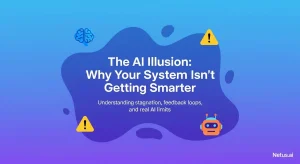
The illusion of AI: Your system's intelligence gap | NetusAI
Stop wasting marketing spend! Most AI tools don’t learn from results, causing content stagnation and low engagement. Discover why your generative AI isn’t getting smarter and what system actually learns and optimizes content.
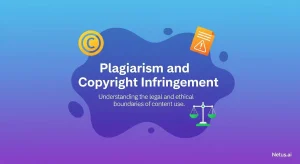
Plagiarism and copyright infringement | NetusAI
Learn the distinct differences between plagiarism and copyright infringement. Understand the ethical and legal implications and get practical strategies for avoiding both academic and creative work with NetusAI.
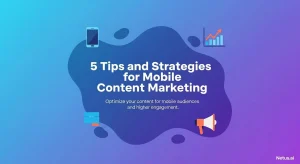
Tips and strategies for mobile content marketing | NetusAI
Optimized for mobile-first indexing, learn 5 essential strategies to capture attention, enhance engagement and drive leads and sales with your mobile content marketing.
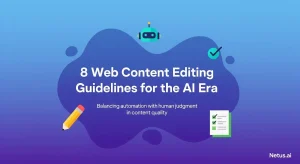
Web content editing guidelines for the AI era | NetusAI
Review web content editing guidelines for the AI era. Learn how to edit AI-generated content, ensure authenticity and optimize for SEO and readability.
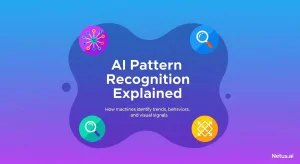
Explaining AI pattern recognition | NetusAI
AI pattern recognition enables machines to identify trends for diverse applications, from detecting plagiarism to fraud. Discover its processes, models and real-world benefits.

